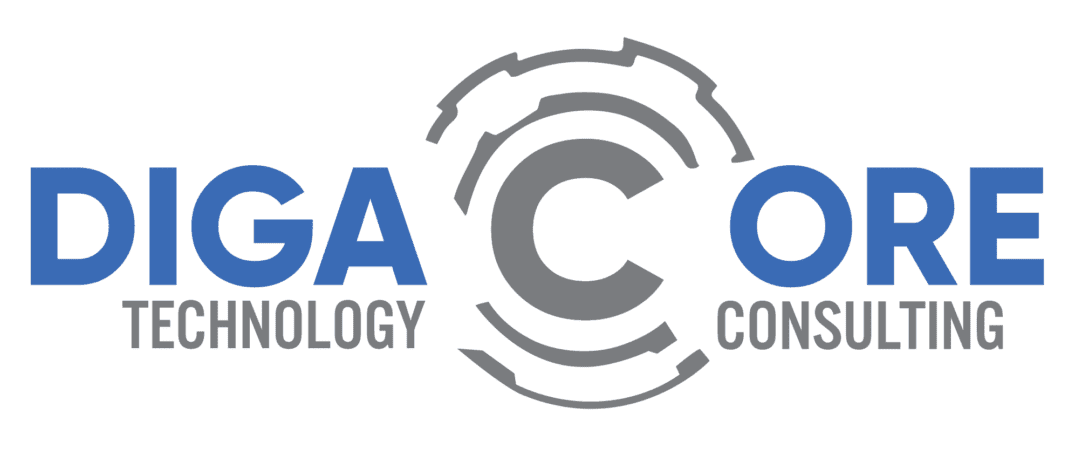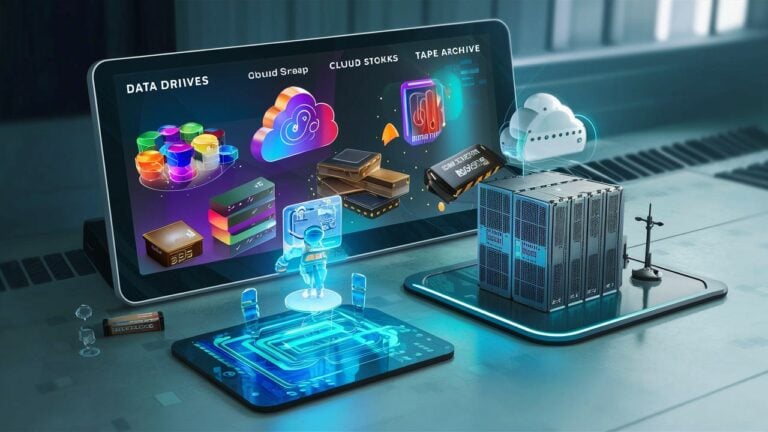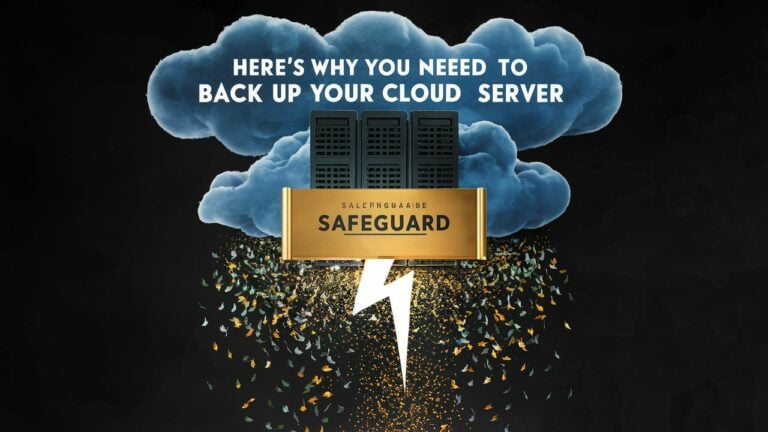Curious about establishing IT infrastructure for a small business? We’re here to guide you through essential aspects to consider. If you wish to discuss your company’s needs further, feel free to reach out.
Navigating the world of IT infrastructure can be overwhelming, especially for small businesses. However, understanding your options and their impact is crucial for ensuring seamless operations, scalability, and security.
If you’ve wondered about setting up IT infrastructure for your small business, this guide will walk you through vital considerations and advantages, with a particular focus on cloud services.
IT Infrastructure: A Foundation for Small Businesses

Small businesses thrive on efficiency, and a well-structured IT infrastructure and IT management service forms the bedrock of their operational prowess. It’s not merely technical jargon; it’s the intricate web of interconnected elements that propels your business forward.
Defining IT Infrastructure for Small Businesses
At its essence, IT infrastructure is the digital ecosystem that fuels your business. This includes the tangible components like computers, servers, and networking devices, coupled with the intangible elements like software, databases, and the intricate web of connectivity that stitches them together.
It’s not a mere collection of gadgets; it’s the lifeline that ensures your data flows seamlessly, your applications run smoothly, and your business stays agile.
The intricate dance of hardware, software, networks, and support systems defines the heartbeat of your organizational processes. Imagine it as the nervous system of your business, with every component playing a crucial role in transmitting and processing information.
For small businesses, constructing this tailored IT infrastructure isn’t just a technical necessity; it’s akin to laying the foundation of a robust structure ready to withstand the tests of time and technological evolution.
The Role of IT Infrastructure in Business Operations
Let’s jump right into it. Picture your business as a complex orchestra, and IT infrastructure as the conductor ensuring harmony.
- Enhancing Communication: In the modern business landscape, communication is the lifeblood. IT infrastructure provides the channels for seamless communication – from emails and video conferencing to collaborative platforms, fostering connectivity among team members regardless of their physical location.
- Streamlining Processes: Efficiency is the currency of small businesses. Your IT infrastructure acts as the silent efficiency expert, automating repetitive tasks, optimizing workflows, and ensuring every machine cog turns smoothly. It’s the reason your inventory management aligns seamlessly with your sales records, and customer data is instantly accessible to your support team.
- Undeniable Impact on Efficiency and Productivity: Zoom out, and you’ll witness the undeniable impact on efficiency and productivity. Tasks that once took hours can now be accomplished in minutes. Access to information is instantaneous, real-time data informs decision-making, and your business becomes a well-oiled machine, navigating the competitive landscape with agility.
On Cloud Or On Premise Infrastructure: What’s the Difference?

The choice between cloud and on-premise infrastructure marks a critical decision for businesses crafting their digital landscapes. On-premise infrastructure involves hosting essential components like servers, storage devices, and networking equipment within the confines of your physical space or a dedicated data center.
This grants direct control but demands substantial investments in space, cooling systems, security measures, and skilled personnel for maintenance. On the other hand, cloud infrastructure, offered by third-party providers, provides a virtual environment where your business can deploy applications, data, and processes. It offers scalability, flexibility, and operational cost advantages.
Cloud solutions enable dynamic resource allocation, global accessibility, and streamlined maintenance tasks handled by the service provider. While on-premise solutions offer control, they come with higher upfront costs, maintenance complexities, and limited scalability. Cloud infrastructure, with its pay-as-you-go model, automatic updates, and accessibility perks, presents an attractive alternative, particularly for small to medium-sized businesses.
The choice hinges on factors such as specific business needs, growth projections, and budget considerations. Below is more information and detail into the nuances of each option, empowering you to make an informed decision aligned with your business goals.
On-Premises Infrastructure
On-Premises Infrastructure involves hosting critical equipment like servers and networking hardware within your physical location or a dedicated data center. This approach grants direct control but demands significant investments in space, cooling systems, security measures, and skilled personnel for maintenance.
It provides a tailored solution for businesses requiring specific control over their IT environment but comes with higher upfront costs, maintenance complexities, and limited scalability.
Physical Requirements
- Space: Beyond the physical room, consider the layout for optimal airflow and accessibility, addressing potential challenges related to equipment placement.
- Cooling & Ventilation: Implementing an effective cooling system involves considerations like HVAC systems, temperature monitoring, and airflow management to prevent overheating.
- Electrical Needs: Besides robust electrical infrastructure, incorporating energy-efficient technologies and backup solutions like generators or solar power can enhance sustainability and resilience.
- Security: In addition to physical security measures, deploying advanced access controls, biometric authentication, and AI-based surveillance systems can fortify on-premises security.
Operational Considerations
- Maintenance & Upgrades: Detailing a comprehensive maintenance plan, including regular health checks, can ensure optimal system performance. Strategically planning upgrades to minimize downtime is crucial.
- Capital Expenditure: Breakdown of initial investments, considering scalability, and exploring leasing options for certain equipment to manage upfront costs effectively.
- In-house Expertise: Delineate the specific skill sets required for the IT team, emphasizing continuous training to stay abreast of evolving technologies and industry best practices.
Cloud Infrastructure

In contrast, Cloud Infrastructure, offered by third-party providers, presents a virtual environment where businesses can deploy applications, data, and processes. It delivers scalability, flexibility, and cost-saving benefits, enabling dynamic resource allocation, global accessibility, and streamlined maintenance tasks handled by the service provider.
This option, with its pay-as-you-go model, automatic updates, and accessibility perks, is particularly appealing to small to medium-sized businesses aiming for operational efficiency and flexibility. The choice between on-premises and cloud infrastructure depends on factors such as specific business needs, growth projections, and budget considerations.
Scalability
- Dynamic Allocation: Looking into the mechanisms of dynamic scaling, such as load balancing and auto-scaling, to understand how resources adapt to varying workloads.
- Global Reach: Evaluating the geographical distribution of data centers, considering factors like latency, data sovereignty, and redundancy for robust global accessibility.
Operational Benefits
- Pay-as-you-go: Understanding the pricing model in detail, including potential hidden costs, and optimizing resource usage to maximize cost efficiency.
- Automatic Updates: Insight into the frequency and methodology of automated updates, ensuring they align with the business’s operational schedules and requirements.
- Backup & Recovery: Exploring the specifics of backup frequency, recovery time objectives (RTOs), and recovery point objectives (RPOs) to ensure the adequacy of disaster recovery measures.
Accessibility & Collaboration
- Remote Access: Exploring the various remote access technologies and security protocols to facilitate secure and efficient remote collaboration.
- Integration: Investigating the breadth and depth of integration capabilities, considering API support, and assessing compatibility with existing third-party applications.
Security & Compliance
- Encryption: Scrutinizing encryption standards employed, both in transit and at rest, and understanding the mechanisms for key management.
- Compliance: Getting into specific compliance certifications the cloud provider holds, tailored to the business’s industry and regulatory landscape, and understanding shared responsibility models for compliance.
The decision-making process between on-premises and cloud infrastructure involves a nuanced understanding of the detailed aspects within each category, aligning them with the business’s unique needs, growth trajectories, and budgetary considerations.
Key Aspects of Small Business IT Infrastructure

When you’re looking to tailor an IT infrastructure for your small business, it demands careful consideration of various factors. Let’s explore and uncover the key aspects that should shape your decisions.
Ask yourself, what are your business needs?
This involves understanding the unique requirements of your business. It’s not a one-size-fits-all scenario; each small business has its specific IT requirements. Begin by deciphering the intricacies of your data – how sensitive is it?
What are the processing needs that fuel your daily operations? Are there regulatory compliance standards that demand meticulous attention? This process sets the stage for building an IT infrastructure that aligns seamlessly with your business goals.
Budget Considerations: Striking the Right Balance
Navigating through budget constraints is a reality for small businesses, but that doesn’t mean compromising on the efficiency of your IT infrastructure. Explore cost-effective solutions without sacrificing essential functionalities. It’s about finding that sweet spot where your IT investments propel your business forward without becoming an overwhelming financial burden. Consider scalable solutions that grow with your business, ensuring a future-proof investment in this exploration.
Security Measures: Safeguarding Your Business
In the digital landscape, safeguarding your business is non-negotiable. Encryption becomes your digital shield, rendering sensitive data impervious to unauthorized access.
Compliance with industry standards is not just a checkbox; it’s a commitment to maintaining the integrity of your business. Unearth the best practices that weave a robust security net around your IT infrastructure – from access controls to regular security audits during this exploration.
Data breaches and cyber threats are omnipresent risks, especially for small businesses. Your IT infrastructure is not just a facilitator of operations; it’s the fortress that protects your digital assets.
Crafting Effective IT Infrastructure for Small Businesses

Strategically developing the ideal IT infrastructure for your small business involves adopting cutting-edge technology and harmonizing it with your long-term business aspirations.
Whether you find yourself at the outset of entrepreneurship or steering the ship of a burgeoning SMB, leveraging the capabilities of the cloud emerges as a steadfast companion on your business journey. The cloud’s dynamic features promise to be a reliable and transformative force, propelling your business towards sustained growth and innovation.











